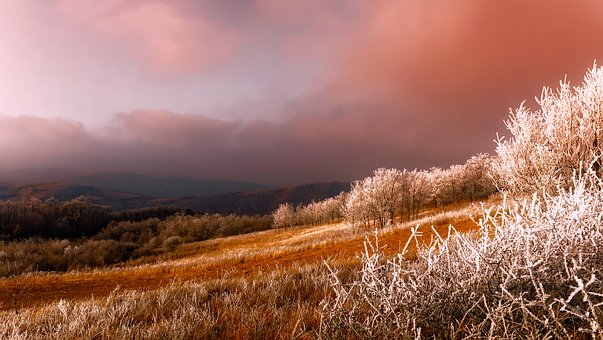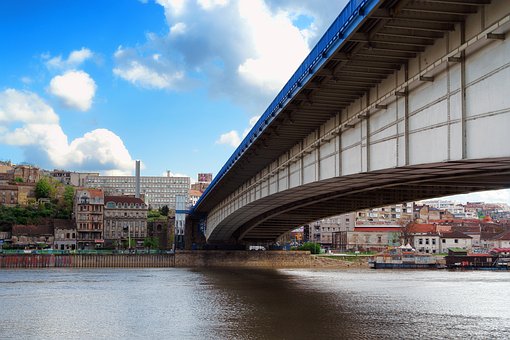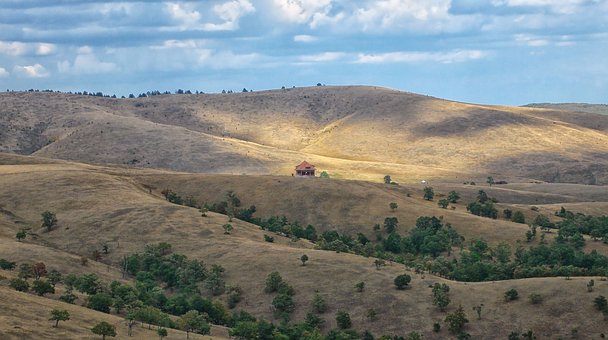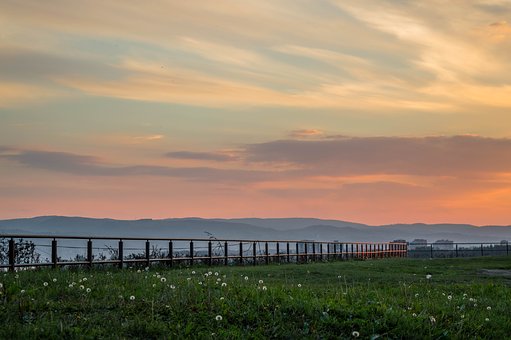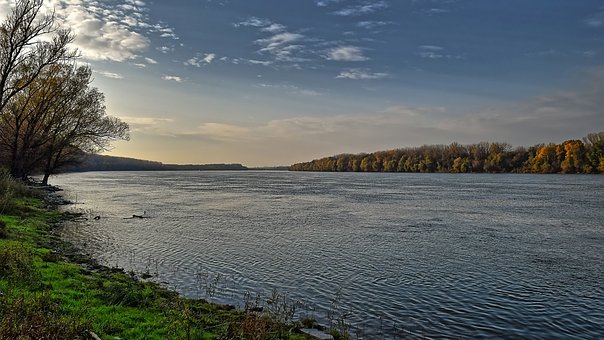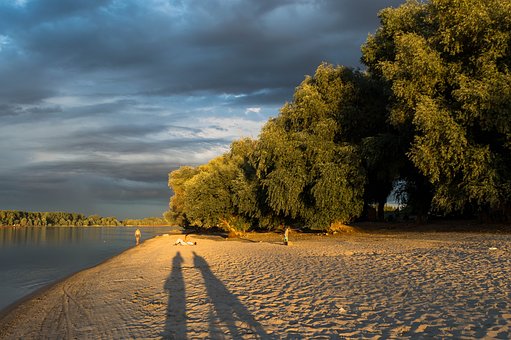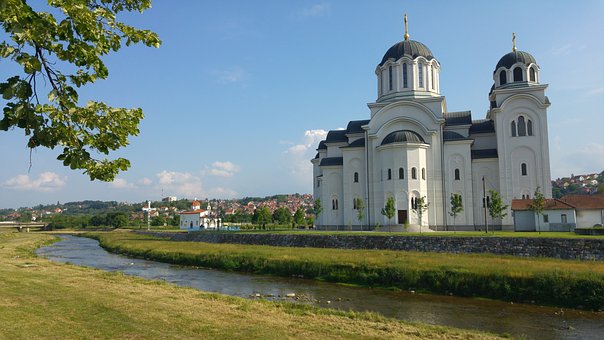Backpacking in Serbia
Serbia is not necessarily a tourist magnet without direct access to the sea and by its length, but offers you as a backpacker the advantage that you do not encounter large tourist streams. You won’t have to wait long and wait in a crowd during your voyage of discovery if you want to take a look at something. So you have the possibility to travel very relaxed through the country and to let the impressions have an effect on you.
Exotic destinations are defined by unique features that are presented in different ways. The term exotic is often associated with shimmering heat, palm trees, coconuts, white sandy beaches and turquoise blue water. You will definitely find the former in Serbia. The fascinating thing about this country is the atmosphere of departure, which is represented by the persistence of the old and the simultaneous departure into the new.
The country is culturally and historically one of the most important states in the Balkans. The boiling metropolis with around 1.3 million inhabitants is Belgrade. Almost 8 million people live in the country itself. Backpacking in Serbia has a lot to discover for you. There are wonderful landscapes and unique buildings as well as ruins, which belong to the UNESCO cultural and natural heritage. For nature lovers there are 5 national parks, 20 nature parks and about 590 nature reserves where you can experience the unique flora and fauna up close.
In Serbia, travelling from A to B is pleasant and easy. Local bus lines serve even the smallest, most remote villages. Comfortable long-distance buses connect the larger metropolises with each other. An alternative way to travel is by boat on the Danube. If you have ever been to Belgrade, the multifaceted nightlife of the city should not be missed. Also a visit of the monastery Sopocani and a detour to Stari Ras belongs simply also on your travel plan.
Climatically, you’ll find a temperate continental climate in the north with cold winters and hot summers, so large temperature differences await you. The climate in the south of the country is very similar to that in the Mediterranean. The currency in Serbia is the Serbian Dinar. You can get money at many ATMs. To withdraw money you should use a credit card, where foreign withdrawals are free of charge.
Serbian is spoken, a standard variety from the Slavic and South Slavic branches, which is based on a Stokavian dialect. Both the Latin and Cyrillic alphabets are used for writing. Learning the language is not easy. In the big cities you can often communicate with English as well as hands and feet.
Serbia’s cuisine is very varied, so you won’t starve to death. In addition to cosy restaurants, you can also make good use of food stalls and other catering facilities. You should definitely try the Serbian cuisine, which has delicious meat dishes and stews ready for you.
Culture in Serbia
Serbian culture results from a long history of events. Thus the country belonged to the Ottoman Empire for three centuries, which had a great impact on cultural development. Serbia was part of Yugoslavia, which was ruled for many years by Josip Broz Tito until 1980. Yugoslavia, the multi-ethnic state, disintegrated after the Yugoslav wars and Serbia became a single state, just like all other countries of the Balkan republic. The Serbs are above all known for their creativity and music.
The great love of art has produced numerous composers, sculptors, painters and actors. The people are very proud and sometimes not very friendly. But appearances are deceptive. You will be met with interest, if you get involved with the culture of the country during backpacking. At the greeting in Serbia there is the triple cheek kiss, alternating left and right, starting on the left side.
More backpacking information about Serbia
Serbia is by no means a cheap travel country. But a backpacker tour through the country won’t be too expensive. With 50 to 70 Euros per day you can make ends meet, although it is a bit more expensive in the metropolises than in rural areas.
A trip through Serbia brings you unique landscapes, a cultural diversity and a special spirit of optimism, which on the one hand clings to old things and on the other hand meets the change of time with open arms. In the country it can get really cold, so that you can’t do without warm clothes depending on the travel time.
There are many possibilities to find a hostel. So there are real bargains for you, where you pay 8 – 10 Euro for one night. On average the prices are between 12 and 14 Euros. The cuisine of Serbia is known for its hearty delicacies. You even know many dishes already. Shopping on the markets is very pleasant, because you will not only find fresh fruit, but sometimes also craftsmanship.
As a German citizen you do not need a visa for backpacking in Serbia. All other important information can be found under Visa & Vaccinations.
Backpacker Budget in Serbia
With a daily budget of 50 to 70 Euro per day you can travel well in Serbia and experience interesting things. You can visit some of the sights for free. If you want to immerse yourself in the nightlife of Belgrade on your backpacker tour, you don’t need a big budget. Rather you can enjoy first class music, cool drinks and great people with your regular daily budget.
For a meal in a simple restaurant you pay about 5 Euro per person. In a middle-class restaurant, the price for a three-course meal for 2 people is around 18 euros. If you prefer fast food in between, you can get a Mac Meal from McDonalds for 4.10 euros. The local beer in the 0.5 l bottle costs 1.30 euros. Export beers are available for 1.50 Euro (0.33 l).
For a Coke you have to plan 1.00 (0.33 l). Water is available in 0.33 l bottles for 0.59 Euro. You can enjoy a delicious cappuccino for 1.10 Euro. To travel as a backpacker through Serbia, you will be offered different means of transportation.
Taxi driving in Serbia
Especially in the big cities you can use taxis for some routes. They are much cheaper than in Germany. So you pay 1 Euro for a taxi right of way and 0.55 Euro for every kilometre driven. But make sure that you choose a regular taxi with a functioning taximeter, so that you are not cheated when it comes to travel costs. A litre of petrol costs 1.20 euros per litre in Serbia.
Buses in South Korea
With local buses you can travel quite cheaply. There is an extensive bus network with which you can travel quite comfortably. For supra-regional travel there are comfortable long-distance buses. A one-way ticket for local transport costs you around 0.80 euros, which is much cheaper than in Germany. With the long-distance buses you can travel from the bus station Belgrade for example to Uzice, Sabac and Cacak. Tickets are available directly at the bus station or online in advance.
Domestic fares in Serbia
Air travel is only suitable for domestic travel to a limited extent. There are only two airports, Belgrade’s capital Nikola Tesla Airport and Constantine the Great Airport in the southern Serbian city of Nis. There is only one national airline in the country, Air Serbia. Domestic flights are difficult to find.
Train travel in Serbia
Taking the train in Serbia on your backpacker trip is not so much fun. The rail network and the trains are outdated. Therefore you need much longer to get from A to B. Traveling is not comfortable and pleasant either. Therefore, the long-distance bus is always the best alternative for overland journeys. They also stop in every small village, so you can get everywhere very easily.
Boating in Serbia
There is a lot of ship traffic on the Danube, so you can let the landscape affect you during a ship tour from the port of Belgrade to Serbia.
Backpacker Route in Serbia
On your journey through Serbia as a backpacker you will enjoy a cultural and geographical diversity. The countless national parks, nature parks and nature reserves invite you to trek and experience nature. The National Park Tara offers you a fantastic mountain landscape where you can meet bears.
In Frushka Gora National Park, old walls, monasteries and churches await you, just waiting to be discovered by you. You can also discover over 20 species of orchids. The largest is the Derdap National Park on the Danube, where there is a species-rich animal world. You’ll encounter lynxes, wolves, jackals, white-tailed eagles, long-eared owls, badgers, martens, red deer, wild boars, black storks and 1100 plant species that have relic character. What else should you have seen on your backpacker trip through Serbia?
Route 1: The classic (15-20 days)
- Discover Belgrade for 3 days and immerse yourself in its unique nightlife.
- 2 days in Pristina. Also in the second largest city of the country there is a lot going on.
- 2 days exploring Uvac Canyon and plunging into an indescribable mountain landscape.
- 2 days to discover monuments in Nis and immerse yourself in history.
- 2 days walk through Tara National Park and discover the village of Mitrovac
- 2-3 days Novi Sad Experience history, culture, beach and music festival
- 2 days hiking through Derdap National Park.
- 2 days visit Sopscani Monastery and explore Stari Ras.
Route 2: Backpacker Intensive Trip (up to 30 days and more)
- Discover Belgrade for 4 days and immerse yourself in its unique nightlife.
- 2 days of Oplenac to immerse yourself in the diversity of urban architecture.
- 3 days in Pristina. Even in the second largest city of the country there is a lot going on.
- 2 days Prizren into the city immerse and culture experience.
- 3 days exploring Uvac Canyon and hiking through an indescribable mountain landscape.
- 2 days experience Kez Nihailova and explore the history of the city.
- 1 day the ruins of Felix Romuliana in Gamziggrad and the museum in Zaijar.
- 2 days to discover monuments in Nis and immerse yourself in history.
- 3 days hiking through Tara National Park and discover Mitrovac.
- 3 days Novi Sad Experience history, culture, beach and music festival.
- 3 days hiking through Derdap National Park.
- 2 days visit Sopscani Monastery and explore Stari Ras.
Travel times in Serbia
Backpacking in Serbia tends to have a continental climate that is temperate in the south and mountainous in the mountains. In winter it gets quite cold, summers are warm and sometimes even very hot. In the summer months there is also more frequent precipitation.
Overall, the best time to visit Serbia is between May and September. However, if you want to combine a city trip with winter sports, the winter months are ideal. Due to the probability of precipitation in the summer months, rainwear should definitely be in your backpack. As always, there is no bad weather, just the wrong clothes.
Backpacker accommodations in Serbia
Serbia is not a cheap travel country, but in contrast to Germany it is quite cheap, especially as you get a lot for your money. There are a lot of overnight accommodations that you can use on your backpacker trip. If you prefer cheap hostels, you should choose a simple hostel for an overnight stay.
You will also have the option of staying in a hotel. You can get a room there for 25 euros. For more luxury you already pay about 60 Euro. Should it be something special, like a 5-star hotel you pay from 150 Euro upwards. But there are also about 68 hostels that you can use for one night. You can find them on the Hostelworld hostel page and their prices are very pleasant. Accordingly, a bed in a hostel costs as follows:
- Belgrade 6 – 13 Euro
- Novi Sad 10 – 20 Euro
- Nis 8 – 11 Euro
- Uzice 11 Euro
- Guca 8 – 40 Euro
- Subotica 12 Euro
Depending on which price category you choose, you will find great differences in the equipment. The cheapest options are usually multi-bed rooms. For a double room you can quickly double or triple it if you want some privacy. Hotels and motels are already a good alternative.
Motels on exit roads and motorways
You will find motels and hotels, especially in the big cities or at entry and exit roads, if you are looking for a further accommodation option. Depending on the equipment, you can get a room for 25 euros with TV, private bathroom and PC connection. If you want to stay directly in the city centres in order to reach sightseeing destinations quickly, it is worth looking for a small city hotel. They are mostly owner-managed, have nice facilities and are reasonably priced for your travel budget.
Camping in Serbia
During the summer months you can experience a unique bond with nature at the campsite. There are wonderful campsites in a beautiful landscape where you can enjoy the sunset and soak up the starry sky at night. The campsites have different facilities for you. From a price point of view, you can sometimes get a pitch for your tent and two people for just 10 euros.
Backpacker Trips & Tips in Serbia
Experiencing Serbia as a backpacker is like opening a surprise package. It is not overcrowded, therefore quite cheap, the Serbs are very friendly and welcome you accordingly dearly. There are many highlights to discover in the nature and also in the cities. In the national parks you are almost alone on your way. There are lakes and fantastic cities with a hip and trendy scene.
Enjoy the peace and untouched nature while hiking, marvel at the unique sunset in Belgrade from the fortress Kalemegdan or visit the small towns inland and immerse yourself in the culture and way of life. In addition, Serbia also has some interesting monuments, ruins and ancient monasteries worth visiting.
You will come into direct contact with the culture at various events. Maybe a music festival will attract you to get to know the Serbian way of life better.
Backpacker Highlights in Serbia
A special highlight is the nightlife in Belgrade, where the chic, celebratory scene scrapes money together to enjoy a night in the unique clubs. Behind morbid facades hide hip clubs. There are houseboats and trendy shops that are very similar to clubs in Berlin and Hamburg.
The Danube is Serbia’s most important vein and connects the cities of Belgrade and Novi Sad through a unique grandiose landscape. A special highlight is a guided boat tour with a rowing boat. There are cattle egrets, seagulls and duckflocks to be observed when you sail with the guide in Zweierkajak across the Danube, once around Veliko Ratno Ostrvo, the big war island.
Another highlight is the Derdap National Park with almost 64,000 hectares, where you can discover nature on various hiking trails. You will find a honey museum in Fruska Gora or one of the 60 wineries around Sremski as well as the up to 8000 year old finds from the Middle- and Neolithic Age at the Lepenski vir Funstätte near Donji Milanovac.
In Derdap National Park there are absolutely untouched corners. You will find brown bears, wolves, lynxes, 130 species of birds and 57 species of fish that live here in the wild. The untouched nature makes this possible.
Backpacker Insider Tips in Serbia
A real insider tip in Belgrade is a tour through the tunnel system of Petrovaradin Fortress, which towers high above the rocky shores. There is a 20 kilometre long tunnel system that you can explore backpacking in Serbia. You’ll wander through a labyrinth interspersed with bends, crossings and plains. The darkness in the tunnel system is for claustrophobic, as only flashlights give light. The path leads you over dust, mud and trampled earth.
In Serbia you will come across many Lost Places and whole villages where no one lives anymore. The inhabitants have left the village that was once so alive. Repusnica is one of them. It is close to the border with Bulgaria. Along the village road there are old buildings where the ravages of time gnaw and plants overgrow everything. Like the once enamelled life and the nature melt together, very special photo motifs result.
A special highlight and a well-kept secret is the Uvac Canyon, where you can spend a lot of time hiking. You will find a wonderful flora and fauna, which presents itself in all its beauty.
Food & Drinks in Serbia
On your backpacker trip through Serbia you will find that eating and drinking is part of cultural life. Serbia’s cuisine is considered Balkan and is influenced by Hungarian, Austrian and Turkish cuisine. The focus is on home-style cooking. Above all, much meat is eaten from the grill or fish from the Danube.
Vegetarians and vegans will have their problems because meat is already on the table for breakfast in this meaty country. Almost all dishes contain meat. Who eats meat, lives in Serbia like God in France and can enjoy the versatile kitchen to the fullest.
At every corner you get Cevapcici, grilled meat rolls. Meat is often accompanied by local sheep cheese. Soups and stews are also popular. In the cities there are simple restaurants as well as chic food, where you can really spoil yourself. There are delicious menus with several courses and drinks that cost little more than 25 to 30 euros. You can indulge yourself in a real culinary treat without having to make a big hole in your travel budget.
Food in Serbia
One of the most famous stews known beyond the borders of the country is the Serbian Bean Soup. If you go to the eastern parts of the country, you’ll definitely notice the oriental influence. The Serbs like to eat well spiced food.
One delicacy is Ajvar, a mush made from eggplants and paprika, which gets a great spiciness from pepper. The national dish is Djuvec, braised rice with peas, onions, peppers and garlic. It serves as a side dish for pork chops. You must also try Sarma, Serbian cabbage roulades. They consist of white cabbage and have a filling consisting of mixed minced meat. Herbs, onions and paprika powder provide a delicious spice.
You can feel the oriental influence in desserts, for example. Here you will often be served baklava, which you certainly know from Turkish cuisine, with your strong coffee.
Drinking in Serbia
The Serbs like to drink Pivo, the local beer. A well-known local beer brand is Lav. You should definitely try Jelen Pivo Pilsener, the light Merak and Kors Korsar. Since Serbia also has large wine-growing areas, you should not underestimate the Serbian wine. Especially delicious are the white wines, which you can enjoy on a wine tour through the country. You should try the Kardas, Bakatorange and the red wines Prokupac, Smederyka and Tamjaika.
Coffee is always strong, black and sweet. In bars and clubs you get the typical drinks like cocktails and long drinks. The Serb in general also likes to drink a good schnapps. The production of the national drink, fruit schnapps Rakija is an art in itself. There is even a faculty of its own at the University of Belgrade, which deals with the production. Throughout the country there are even annual championships for those who produce the best rakija. You have to try the schnapps.
Backpacker Visa and Vaccinations in Serbia
As a German citizen you do not need a visa for your backpacker trip through Serbia. However, you should make sure that your entry papers are valid. The entry regulations according to the Foreign Office are as follows:
- Passport: Yes
- Provisional passport: no
- Identity card: yes
- Temporary identity card: no
- Children’s passport with photo: Yes
Comments
As a foreigner, you must register with the police in Serbia for backpacking within 24 hours of your arrival. You will receive a certificate which you will have to present during checks in the country and upon departure. You should check with the Foreign Office for travel safety before you start your journey.
Medical Information & Vaccinations for Serbia
You can enter Serbia as a backpacker without a vaccination, but it is advisable to have the standard vaccinations of the Robert Koch Institute up to date. Although the medical care is given, it usually does not correspond to the German standard. Even in hospitals you will not find adequate equipment, so that sometimes no adequate medical care, according to the clinical picture is possible.
The hygienic conditions are also unsatisfactory. An exception are the public and private medical practices and clinics in Belgrade, Novi Sad and Nis. Treatment with a foreign medical certificate is only possible in state hospitals. Otherwise you will have to pay dearly for treatment. Thanks to a sufficiently dense network of pharmacies, you can get medication everywhere.

